Dodge City

Brief Synopsis
Cast & Crew
Michael Curtiz
Errol Flynn
Olivia De Havilland
Ann Sheridan
Bruce Cabot
Frank Mchugh
Film Details
Technical Specs

Synopsis
Six years after the railroad puts Dodge City, Kansas, on the map, the town becomes the Babylon of the West. Run by Jeff Surrett, a man whose only interest is cash and killing, Dodge City is now a bastion of lawlessness. When Wade Hatton, accompanied by his sidekicks, Rusty Hart and Tex Baird, rides into town to sell his Texas cattle, Wade meets Surrett, an old enemy from his railroad days, and refuses to sell his cattle to him. Wade learns that there is no law after his cattle buyer is shot in the back by one of Surrett's men, but although the people of Dodge appeal to him to accept the mantle of sheriff, Wade refuses. It is only after Mrs. Cole's little boy is killed by wanton gunplay in the streets that he reconsiders and pins on the badge of the law. Wade and his men undertake a campaign to clean up the town, and when newspaperman Joe Clemens uncovers evidence that would convict Surrett of crooked cattle dealing, the age of lawlessness appears to be at an end. However, after Joe is killed before he can publish his story, the only person who can put Surrett behind bars is Abbie Irving, the doctor's niece. Because Wade is in love with Abbie, he arranges for her to leave town for safety. Meanwhile, Wade arrests Surrett's henchman, Yancey, for the shooting of Joe, and when his prisoner is threatened by a lynch mob, Wade takes him aboard the same train on which Abbie is traveling. Once the train is out of town, Surrett and his men come aboard and lock Rusty, Abbie and Wade in a burning railroad car. During a daring escape, Wade and Rusty kill Surrett and his gang, and now that peace has come to Dodge City, Wade and Abbie set out to tame Virginia City.

Director

Michael Curtiz
Cast

Errol Flynn

Olivia De Havilland
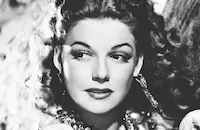
Ann Sheridan
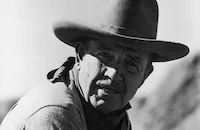
Bruce Cabot
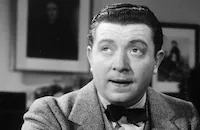
Frank Mchugh

Alan Hale

John Litel

Henry Travers

Henry O'neill

Victor Jory

William Lundigan

Guinn "big Boy" Williams
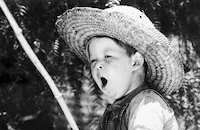
Bobs Watson

Gloria Holden

Douglas Fowley
Georgia Caine

Charles Halton

Ward Bond

Cora Witherspoon
Russell Simpson
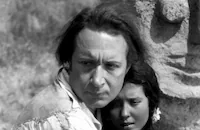
Monte Blue
Nat Carr

Clem Bevans

Joseph Crehan
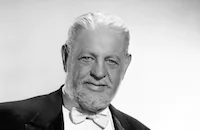
Thurston Hall
Chester Clute

James Burke
Robert Homans
George Guhl
Spencer Charters
Bud Osborne

Wilfred Lucas
Richard Cramer
Milton Kibbee
Earle Hodgins
Fred Graham
Tom Chatterton
Pat O'malley
Henry Otho
Pat Flaherty
James Farley

Jack Mower
Horace Carpenter
Francis Sayles
Ky Robinson
William Crowell
Earl Dwire
Bob Stevenson
Bruce Mitchell
Hal Craig

Howard Mitchell
George Chesebro
Frank Pharr
Ed Peil Sr.
Frank Mayo
Guy Wilkerson
Steve Clark

William Mccormick
Vera Lewis
Crew
George Amy
Milo Anderson
Robert Buckner
Leo F. Forbstein
Oliver S. Garretson
Jo Graham
Byron Haskin
Natalie Kalmus
Robert Lord
Morgan Padelford
Sol Polito
Ray Rennahan
Sherry Shourds
Ted Smith
Max Steiner
Perc Westmore

Photo Collections
Videos
Movie Clip




Trailer
Hosted Intro
Film Details
Technical Specs

Articles
Dodge City
Confident that their swashbuckling superstar Errol Flynn could comfortably and convincingly swap his sword for six-shooters, Warners cast him as Wade Hatton, an Irish soldier of fortune whose travels took him to the Old West, trailblazing in the service of railroad mogul Colonel Dodge (Henry O'Neill). Within a matter of years, the eponymous Kansas community that sprang up at the juncture with Dodge's Texas line becomes rife with corruption and vice, with most of the graft funneling to cattle baron Jeff Surrett (Bruce Cabot).
Hatton, for his part, is content to shepherd wagon trains into Dodge, and on one such trip pursues a flirtation with Abbie Irving (Olivia de Havilland), en route to joining the household of her town doctor uncle (Henry Travers). Unfortunately, her immature yahoo brother (William Lundigan) drunkenly triggers a cattle stampede, and is trampled during a confrontation with Hatton. An embittered Abbie is unable to forgive the trail boss for his role in the tragedy.
After a young boy is dragged to death in the wake of a shootout spurred by Surrett's cronies, Hatton determinedly assumes Dodge's long-empty sheriff's office with a pledge to clean up the lawless town. Surrett's efforts to buy him off only bring redoubled efforts on Hatton's part to find charges that will stick, and their duel of wills propels Dodge City all the way to its rousing finale.
The film-going public's response to Flynn as Western hero was so positive that he would go on to make a career niche within the genre - his resume as thereafter marked by Virginia City (1940), Santa Fe Trail (1940), They Died With Their Boots On (1941) and San Antonio (1945). At no time in Dodge City, or in any of his subsequent sagebrushers, did the Tasmanian actor make an effort to mask his clipped diction; Dodge City might have been the first and last time that screenwriters even bothered to explain it away. "I felt I was miscast in Westerns, but this was impossible to point out to producers when the pictures were so highly successful," Flynn recounted in his memoir, My Wicked, Wicked Ways. "While I couldn't understand the public buying me particularly, I could understand the Western, the frontier story, as a classic form of national entertainment. It is part of America's heritage, our history."
Although Dodge City is accorded its place among the revered films where she displayed her palpable onscreen chemistry with Flynn, de Havilland regarded the project as a career letdown. She was tired of the string of ingenue parts Warners steadily provided, and her preference for the saloon singer role that went to Ann Sheridan went unheeded. "It was a period in which she was given to constant fits of crying and long days spent at home in bed," declared Tony Thomas in The Films of Olivia de Havilland (Citadel Press). "She was bored with her work and while making Dodge City she claims that she even had trouble remembering her lines." In context, it's very fortunate that the studio thereafter okayed her loan-out for a project she craved, portraying Melanie in Gone With The Wind (1939).
Dodge City is most memorable for its collection of elaborate set pieces, many of which would provide Warner westerns with stock footage for years to come and provide Mel Brooks with much of what was so side-splittingly spoofed in Blazing Saddles (1974). In the hands of house style-defining director Michael Curtiz and cinematographers Sal Polito and Ray Rennahan, the film boasts what remains the definitive saloon brawl in movie history. (In a moment that presaged Curtiz's work in Casablanca (1942), the fracas is sparked by ex-Confederates determined to sing Dixie over a spirited rendition of Marching Through Georgia). Also remarkable is Flynn's climactic confrontation with Cabot, set in a blazing mail car on a runaway train.
Note must be made of Max Steiner's stirring score, as well as the film's rich roster of character players, largely drawn from the Warners lot. In addition to the aforementioned, there are distinguished efforts from Alan Hale and Guinn "Big Boy" Williams as the comic relief sidekicks, Victor Jory, Douglas Fowley and Ward Bond as Cabot's minions, and Frank McHugh as the newspaper publisher who provokes the heavies at his peril.
Producer: Robert Lord
Director: Michael Curtiz
Screenplay: Robert Buckner
Art Direction: Ted Smith
Cinematography: Sol Polito, Ray Rennahan
Editing: George J. Amy
Music: Max Steiner
Cast: Errol Flynn (Wade Hatton), Olivia de Havilland (Abbie Irving), Ann Sheridan (Ruby Gilman), Bruce Cabot (Jeff Surrett), Frank McHugh (Joe Clemens), Alan Hale (Rusty Hart), John Litel (Matt Cole).
C-104m. Closed captioning.
by Jay Steinberg

Dodge City
Quotes
Trivia
Notes
According to the CBCS, Georgia Caine replaced Elisabeth Risdon in the role of "Mrs. Irving." News items in Hollywood Reporter note that Warner Bros. chartered a special sixteen-car train which transported at least thirty-six reporters to Dodge City for the film's premiere. Along the way, an unscheduled stop was made in Pasadena so that Olivia de Havilland could leave the train and report for work on Gone With the Wind. The studio also sent a Technicolor crew to film the premiere, which was attended by Franklin D. Roosevelt, Jr. and over 70,000 visitors that had come to the city to celebrate the premiere.

Miscellaneous Notes
Released in United States 1939
Released in United States March 1976
Released in United States 1939
Released in United States March 1976 (Shown at FILMEX: Los Angeles International Film Exposition (The 48-Hour Cowboy Movie Marathon) March 18-31, 1976.)















